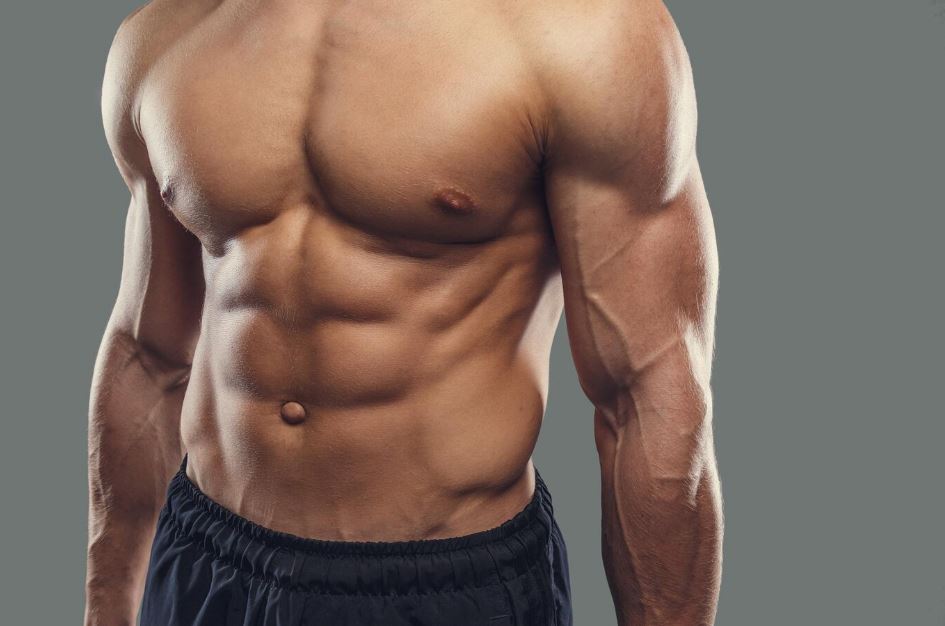
It’s not a magical process that requires Photoshop or genetics to reveal abdominal muscles. It’s literally about subtracting—removing layers of fat beneath the skin until the body’s natural muscles show through. This unveiling usually starts at 10% to 13% body fat for men. The window for women is somewhat higher, ranging from 14% to 20%. However, due to differences in fat distribution, muscle depth, and lifestyle, there are those who must dive even lower for every person who can clearly see their abs at these thresholds.
Think about how a sculpture forms out of stone—not by adding a shape, but by carefully chipping away everything else. In a similar vein, the six-pack is hidden beneath each torso by different levels of insulation. You reveal more the thinner you get. Furthermore, those figures aren’t just for Olympians, despite their intimidating appearance. They have been attained—and maintained—by athletes during peak seasons, actors getting ready for roles, and more and more regular people prioritizing consistency over beauty.
| Detail | Information |
|---|---|
| Topic | What Body Fat Percentage To See Abs |
| Recommended Male Range | 6% to 13% |
| Recommended Female Range | 14% to 20% |
| Influencing Factors | Genetics, Muscle Mass, Nutrition, Training Intensity, Sleep, Hydration |
| Measurement Methods | DEXA Scan, Skinfold Calipers, Bioelectrical Impedance, Bod Pod, DXA Scan |
| Risk of Going Too Low | Hormonal imbalance, fatigue, decreased immunity |
| Notable Example | Michael B. Jordan’s abs in Creed visible at approx. 9–10% body fat |
| Societal Influence | Celebrities, media pressure, filtered fitness standards |
| Goal Strategy | Sustainable calorie deficit, resistance training, consistent routine |
After completing rigorous training and diet plans, actors like Chris Pratt and Zac Efron have displayed toned abs on screen. The most notable change in these changes is the consistent decrease in body fat, not the quantity of crunches. Notably, Efron has openly discussed how unsustainable it felt to maintain a body fat percentage of 8% for prolonged periods of time, citing emotional exhaustion and sleep disturbances. This emphasizes an important point: sustainability isn’t always reflected in what is visible.
Fitness experts, on the other hand, frequently help clients reach a more achievable goal. The sweet spot, where abs start to show without endangering long-term health, is thought to be between 10% and 14% for men and 18% to 22% for women. This range allows for the subtle appearance of obliques and upper abdominal lines without making day-to-day living feel like survival mode. At this point, meals continue to be pleasurable, energy levels remain steady, and exercise feels empowering rather than discouraging.
It’s critical to understand that losing body fat is a process of recalibration rather than a race. Building lean muscle underneath is the first step in getting noticeable abs, followed by a gradual reduction in total fat stores. Strength training is essential in this situation. Compound exercises like squats and deadlifts increase total fat burn by inducing a metabolic response throughout the body, while ab-specific exercises like weighted sit-ups and hanging leg raises aid in shaping the core. They support the entirety of your transformation, not just the abs.
Naturally, the second half of this discussion is about diet. establishing a small, sustainable deficit—usually 300 to 500 calories below your maintenance level—rather than drastically cutting calories. When combined with balanced fats, high-protein meals, and plenty of water, the effects become increasingly apparent over time. Incorporating healthy fats from avocado, nuts, and olive oil is especially advantageous for hormone function, satiety, and fat loss.
Caution is necessary, especially for women. Reducing body fat below 15% can weaken bones, interfere with menstruation, and lower estrogen production. For this reason, depending on the season of competition, many female athletes alternate between periods of reduced and increased body fat. For example, Venus Williams has been candid about juggling her autoimmune disease with her performance, putting strength and energy above appearance during training.
There has also been a noticeable improvement in body fat measurement. An incredibly clear picture of your composition, broken down into bone density, muscle mass, and fat, can be obtained with tools like DEXA scans. Although results can vary depending on hydration, at-home scales that use bioelectrical impedance provide accurate estimates. Tracking progress using metrics like strength, clothing fit, and the mirror is surprisingly effective for most people and much more motivating than obsessing over a single figure.
The six-pack has come to symbolize discipline in culture and is frequently used to gauge not only physical fitness but also self-control and deservingness. This is made worse by social media, which provides daily doses of filtered, flexed, and sometimes faked perfection. Ironically, though, the healthiest bodies are frequently kept out of the public eye—those that are quietly maintained, unburdened by performativity or pressure, and motivated by internal motivation rather than viral approval.
Trainers have been advising more on functionality than style in recent years. “We chase abs like trophies, but often ignore the stamina, posture, and power that a strong core delivers daily,” said a well-known coach. For people who feel that reaching 12% body fat isn’t feasible or worth the sacrifice, that change has been extremely beneficial.
What is the duration required to transition from soft to sculpted? With regular effort, most people lose 1% to 2% of their body fat each month. If all goes according to plan, it will take three to six months to become lean (12% to 15%) from average (20% to 25%) through exercise, diet, sleep, and stress reduction. This pace is especially sustainable, maintaining both sanity and muscle.
Daily movement and thoughtful meal preparation make it simpler to maintain the routine. Most trainers advise concentrating on consistency rather than striving for perfection. The objective is to develop habits that last long after you lose your abs, not to suffer for a short moment.
Fundamentally, abs are more than just a way to look good. They exhibit resilience, care, and intention. They show up when you show up, day after day, choosing effort over ego, health over shortcuts. Therefore, the true transformation isn’t beneath your shirt, regardless of how long it takes you. It’s in the fortitude you develop during the journey.
